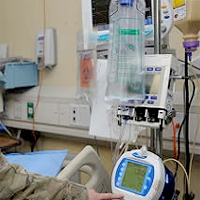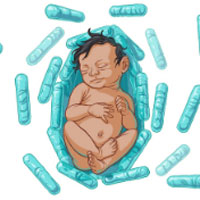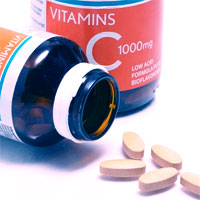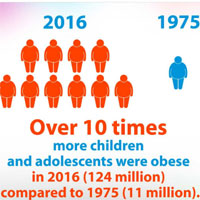Tag: nutrition

Supplemental Parenteral Nutrition vs. Usual Care in Critically Ill Adults
This individually titrated supplemental PN strategy applied over 7 days significantly increased energy delivery when compared to usual care delivery. Clinical and functional outcomes were similar between the two patient groups.... read more

Nutrition Therapy – One Size Does Not Fit All
A review paper published in Critical Care highlights the importance of employing targeted nutritional care for critically ill patients. The sad truth, according to the article, is that current ICU nutrition delivery worldwide... read more

Probiotics Offer Powerful Protection Against Sepsis in Infants
Sepsis can occur in just about anyone, including infants. Recent research shows feeding newborns probiotics (healthy bacteria) significantly lowers the child's risk of developing sepsis. The study involved infants in rural... read more

Hospitalist Tackles Chronic Disease With Food Pharmacies
Before January 2017, Rita Nguyen, MD, was "pretty much like any other academic hospitalist," she says. In the hospital, she could provide excellent care to patients, but once they were discharged, many didn't have the necessary... read more

Early goal-directed nutrition in ICU patients (EAT-ICU)
Extensive weight loss has been documented in intensive care unit (ICU) survivors, primarily as the result of muscle loss, leading to impaired physical function and reduced quality of life. The aim of the EAT-ICU trial is... read more

Knowledge of Constituent Ingredients in Enteral Nutrition Formulas Can Make a Difference in Patient Response to Enteral Feeding
The selection of an EF should be a conscientious process based on a number of factors, including the patient's clinical and medical status. The ingredients need to be carefully evaluated in their quality and quantity as they... read more

Dietitians in Critical Care
Patients in the critical care setting are at risk of malnutrition. The provision of nutrition support (enteral or parenteral) to critically ill patients is vital, but achieving the optimum quantity and balance is a contentious... read more

Hypovitaminosis C and vitamin C deficiency in critically ill patients despite recommended enteral and parenteral intakes
Critically ill patients have low vitamin C concentrations despite receiving standard ICU nutrition. Septic shock patients have significantly depleted vitamin C levels compared with non-septic patients, likely resulting from... read more

Dr. Paul Wischmeyer Brings Humanity To Medicine
Dr. Paul Wischmeyer's journey to becoming an internationally-renowned critical care and perioperative nutrition researcher and clinician began at the age of 15 when a bout of strep throat and a prescription for antibiotics... read more

Initial Nutritional Management During NIV and Outcomes
Patients starting noninvasive ventilation (NIV) to treat acute respiratory failure are often unable to eat and therefore remain in the fasting state or receive nutritional support. Nearly three-fifths of patients receiving... read more

Enteral vs. Parenteral Early Nutrition in Ventilated Adults with Shock
In critically ill adults with shock, early isocaloric enteral nutrition did not reduce mortality or the risk of secondary infections but was associated with a greater risk of digestive complications compared with early isocaloric... read more

Tenfold increase in childhood and adolescent obesity in four decades
The number of obese children and adolescents (aged five to 19 years) worldwide has risen tenfold in the past four decades. If current trends continue, more children and adolescents will be obese than moderately or severely... read more

Nutrition in Surgery and Critical Care
DCRI Perioperative Nutrition focuses on the study of hospital-based treatments to improve preparation and recovery from surgery, major illness, and critical care. We put real science into improving patients' lives with interventions... read more

Current Clinical Nutrition Practices in Critically Ill Patients in Latin America
In the ICU setting in Latin America, malnutrition was highly prevalent and caloric intake failed to meet targeted energy delivery in 40% of critically ill adults receiving nutrition therapy. Supplemental administration of... read more




